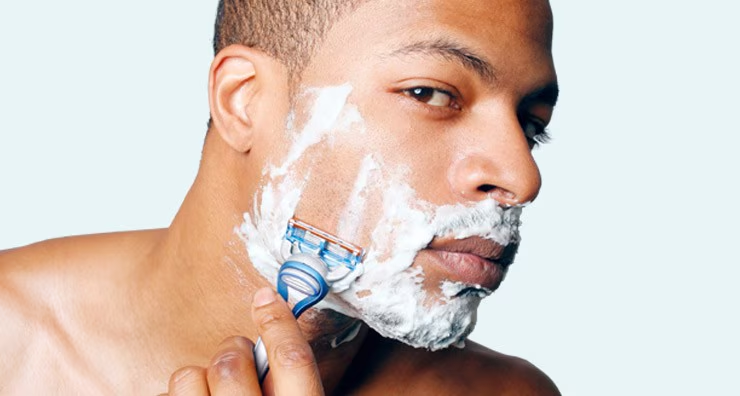Razor burn is a common, uncomfortable problem that can leave your skin red, irritated, and sore after shaving. Whether you’re a daily shaver or someone who only shaves occasionally, understanding how to deal with razor burn is key to maintaining smooth, healthy skin. In this comprehensive guide, we’ll explore what razor burn is, why it occurs, and provide actionable strategies—ranging from prevention to treatment—to help you minimize and ultimately eliminate razor burn.

What Is Razor Burn? Understand Your Enemy
Razor burn refers to the skin irritation characterized by redness, burning, and sometimes itching or small bumps immediately after shaving. It typically occurs when the razor blade irritates the skin, often due to a combination of factors:
Dull blades: Repeated use can dull the blade, causing more friction.
Insufficient lubrication: Shaving without proper cream or gel increases friction.
Improper technique: Shaving too quickly or against the grain may lead to irritation.
Sensitive skin: Naturally sensitive or already irritated skin is more prone to damage.
Understanding the causes and characteristics of razor burn is essential for developing an effective prevention and treatment routine.

The Importance of “How to Deal with Razor Burn”
The phrase “how to deal with razor burn” is a common search query for those struggling with post-shave irritation. By clearly addressing this topic, content creators can help users find reliable, actionable advice tailored to their needs. This guide has been optimized to answer this query, offering step-by-step insights into minimizing and treating razor burn.
Prevention Is Better Than Cure: Strategies to Avoid Razor Burn
Preventing razor burn starts long before you ever touch a razor. By adopting a few simple yet effective habits, you can significantly reduce the risk of irritation:
1. Proper Skin Preparation
Cleanse Your Skin: Use a gentle, non-comedogenic cleanser to remove dirt, oil, and dead skin cells. This ensures your skin is clean and ready for shaving.
Warm Water and Moisture: Shave after a warm shower or apply a warm, moist towel to soften the skin and hair. This helps open up your pores and makes hair easier to cut.
Pre-Shave Products: Consider applying a pre-shave oil or cream that lubricates the skin and further softens the hair. This step creates a protective barrier between the skin and the blade.
2. Using a Clean, Sharp Razor to Deal with Razor Burn
Choose the Right Razor: Use a sharp, clean razor—whether disposable or reusable—to minimize tugging and irritation. Dull blades can lead to unnecessary friction.
Regular Replacement: Replace your razor or razor blades frequently. A good rule of thumb is changing your blade after 5–7 shaves, or sooner if you notice any dullness.
Clean During Use: Rinse your razor frequently with warm water while shaving to remove hair and shaving cream buildup.
3. Mastering Shaving Techniques to Deal with Razor Burn
Use a Quality Shaving Cream or Gel: A moisturizing shaving cream or gel provides a smooth surface and reduces friction between your skin and the razor.
Shave with the Grain: Shave in the direction of hair growth (with the grain) to minimize skin irritation and decrease the risk of razor burn.
Gentle, Short Strokes: Avoid pressing the razor too hard. Instead, use light, short strokes and let the blade do the work.
Avoid Repeated Passes: Limit how many times you shave over the same area. Repeated strokes can irritate the skin and worsen razor burn.

Your Step-by-Step Guide to Minimizing Razor Burn
Follow this simple, effective routine for better shaving results:
| Step | Action |
| 1. Pre-Shave Prep | Wash your face with a gentle cleanser and apply a warm towel. |
| 2. Softening | Apply a pre-shave oil or cream to soften the hair. |
| 3. Lather Up | Use a generous amount of moisturizing shaving cream or gel. |
| 4. Shave with the Grain | Use light, gentle strokes in the direction of hair growth. |
| 5. Rinse Frequently | Rinse the razor under warm water to keep it clean. |
| 6. Post-Shave Rinse | Rinse your face with cool water to close pores and soothe the skin. |
| 7. Moisturize | Apply an alcohol-free aftershave balm or lotion to calm the irritation. |
| 8. Exfoliate Gently | Exfoliate a few times a week to prevent trapped dead skin cells. |
Following these steps can help you maintain smoother skin while minimizing the risk of razor burn.
Choosing the Right Tools and Products to Deal with Razor Burn
Selecting the proper tools is crucial to effective razor burn prevention:
Razor Type: Consider using a razor designed for sensitive skin. Some razors come with extra lubrication strips or pivoting heads to better adapt to your skin’s contours.
Shaving Creams and Gels: Opt for products that are fragrance-free and coated with soothing ingredients like aloe vera or vitamin E.
Pre-Shave Products: Invest in a good quality pre-shave oil or lotion to reduce friction and improve razor glide.
Different skin types may benefit from different products, so don’t hesitate to experiment until you find the combination that works best for you.
Treating Existing Razor Burn: Soothe and Heal
Even with careful shaving, razor burn can sometimes occur. Here are some effective treatments to soothe and heal irritated skin:
Over-the-Counter Treatments
Hydrocortisone Cream: A thin layer can reduce inflammation and ease discomfort.
Aloe Vera Gel: Known for its cooling and healing properties, it helps soothe irritated skin.
Witch Hazel: Acts as a natural astringent and reduces inflammation, making it ideal for soothing razor burn.
Moisturizing Lotions: Use an alcohol-free moisturizer to lock in hydration and repair the skin barrier.
Natural and DIY Solutions
Cold Compress: Apply a cold, damp cloth to the affected area to reduce inflammation.
Oatmeal Mask: Soak in a colloidal oatmeal bath or apply an oatmeal mask for its anti-inflammatory benefits.
Tea Tree Oil (Diluted): A few drops of diluted tea tree oil can help combat bacteria and reduce irritation—always perform a patch test first.
Avoid picking or scratching the affected areas, as this can lead to further irritation or potential scarring.
When to Seek Professional Help when you Razor Burn
While most cases of razor burn can be managed with proper care, there are situations when you should consult a healthcare professional:
Persistent Symptoms: If razor burn continues despite following preventive measures and self-care.
Severe Irritation or Infection: Look for signs such as increased pain, swelling, pus, or severe redness.
Recurring Issues: If razor burn becomes a chronic problem, a dermatologist can provide customized advice or prescription treatments.
Professional guidance is particularly important if your skin is sensitive or if common remedies do not bring relief.
Conclusion: Smooth, Irritation-Free Skin Awaits
Dealing with razor burn requires a combination of proper skin preparation, the right shaving tools, gentle techniques, and appropriate post-shave care. By following the comprehensive strategies outlined above, you can effectively prevent and treat razor burn, ensuring your skin remains smooth and irritation-free. Experiment with these methods, personalize your routine, and remember that consistency is key to achieving long-term results.
For further reading, you might consider exploring articles on skincare routines, choosing the best razors for sensitive skin, and additional natural remedies for skin care. Smooth, healthy skin is within reach when you combine knowledge with practical steps—start your journey today!



